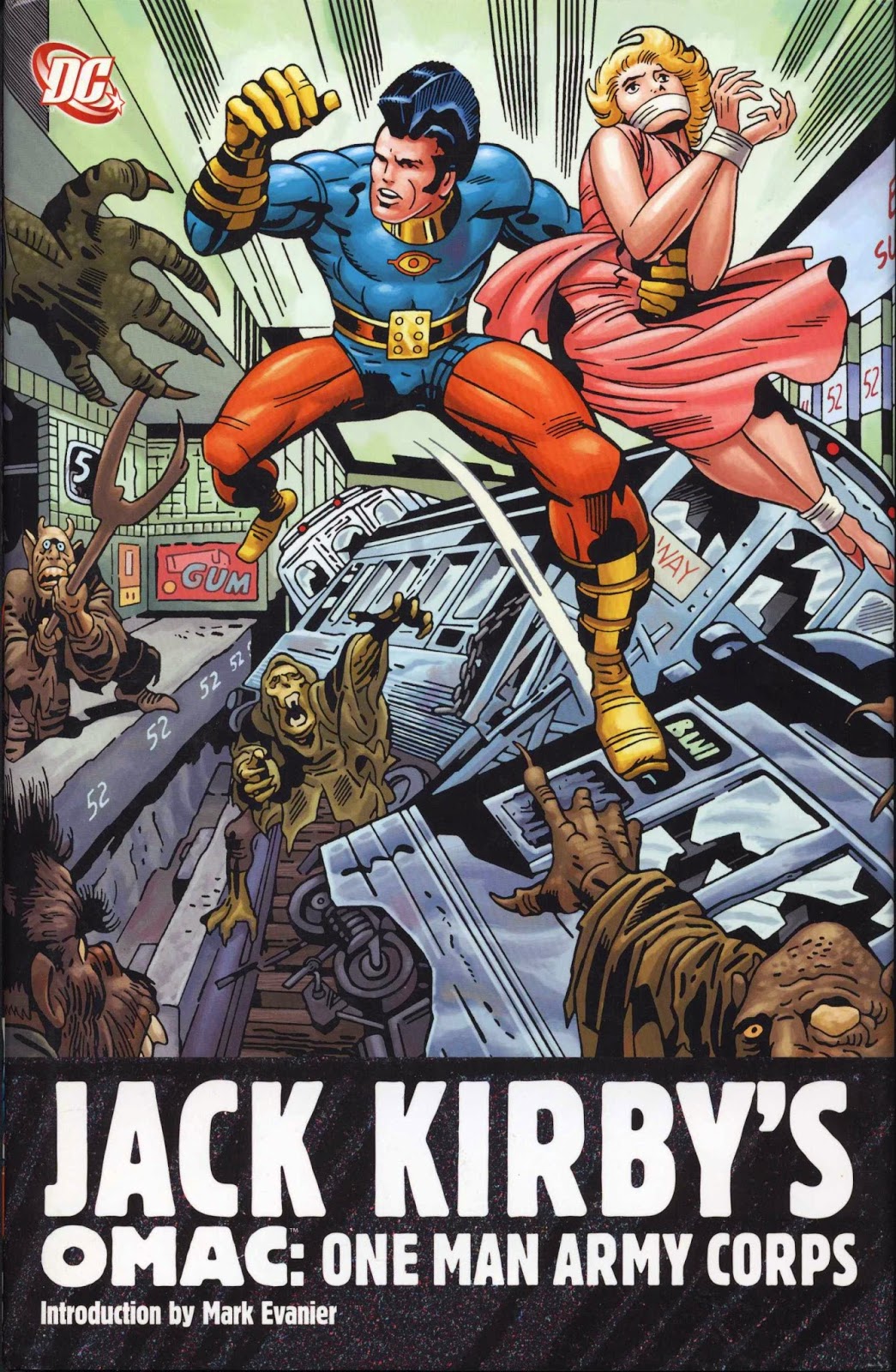This 200-page hardbound volume, published in June, 2008 by DC Comics, contains all the issues of 'OMAC ('One Man Army Corps) that DC released, starting with issue one in September, 1974, and concluding with issue 8 in November, 1975.
'Jack Kirby's OMAC' is in full color, but uses the 'newsprint' quality paper that draws some criticism from reviewers at online venues.
The book features a Forward by Mark Evanier, who indicates that Jack Kirby first envisioned the OMAC character ca.1968, during his time at Marvel comics. Kirby evidently was interested in creating a sort of near-future manifestation of Captain America, a character whose 'Go Team USA !' attitudes would seem obsolete and inadequate to cope with a world similar to that of the one outlined in Alvin Toffler's 1970 book Future Shock.
Kirby left Marvel before the idea of a 'Future Shock' Captain America progressed beyond the conceptual stage.
As Evanier relates, in 1974, DC's contract with Kirby called for him to deliver a minimum of 15 pages of completed artwork per week. Because Kammandi was doing well, DC's management suggested that Kirby do another sf-themed title, and so, Kirby recalled his concept of an updated version of Captain America from six years previously, and launched OMAC.
The opening issue introduces us to Buddy Blank, an undersized, hesistant young man who works as an errand boy in a large corporation. When Buddy stumbles on a clandestine sales operation, he is marked for elimination by his employers - until, that is, Blank becomes the target for a super-secret program: the conversion of an everyday, average citizen into OMAC, the One Man Army Corps.....
OMAC is the prime agent for justice in 'the world that's coming', an entity that reflects the Future Shock visions of a globe beset by the social upheavals wrought by the advent of new technologies.
In succeeding issues, OMAC, now an agent of the Global Peace Agency, and aided by the high-tech gadgetry of the satellite Brother Eye, takes on corrupt gangsters, megalomaniacs intent on conquering the planet, illegal body-swapping brokers, and hordes of monsters infesting the subways of New York City.
The artwork in OMAC is as good as anything Kirby did on his other titles for DC (and, considering his workload, Kirby's artwork was especially impressive). As always, Kirby's pencils (some of his draft pages are reproduced here) were ably inked by Mike Royer.
Summing up, I really don't think 'Jack Kirby's OMAC' is sophisticated enough to appeal to modern comic book readers. The book is directed more towards those over 45 who are nostalgic over those long-ago days of Kirby's titles for DC, as well as Kirby fans and completists. They are more likely to enjoy this incarnation of 'OMAC'.











Over the last five years I've been catching up on Kirby's DC work -this year I read through the first 20 issues of Kamandi. I haven't gotten to OMAC yet. Based on what I saw in Kamandi and in the Fourth World series, I would agree with everything you have to say about Kirby's work -the art still has that energy and crazy appeal, but the writing...there are a lot of strong concepts and ideas but it never seems to amount to anything truly satisfying. I have been curious about OMAC, but based on your review, it sounds like more of the same. I wish he had been paired with someone who could have helped him develop those ideas more fully. I'm sure that's sacrilege to some, but it would have lead to much more exciting characters and stories. Thanks for this review.
ReplyDelete